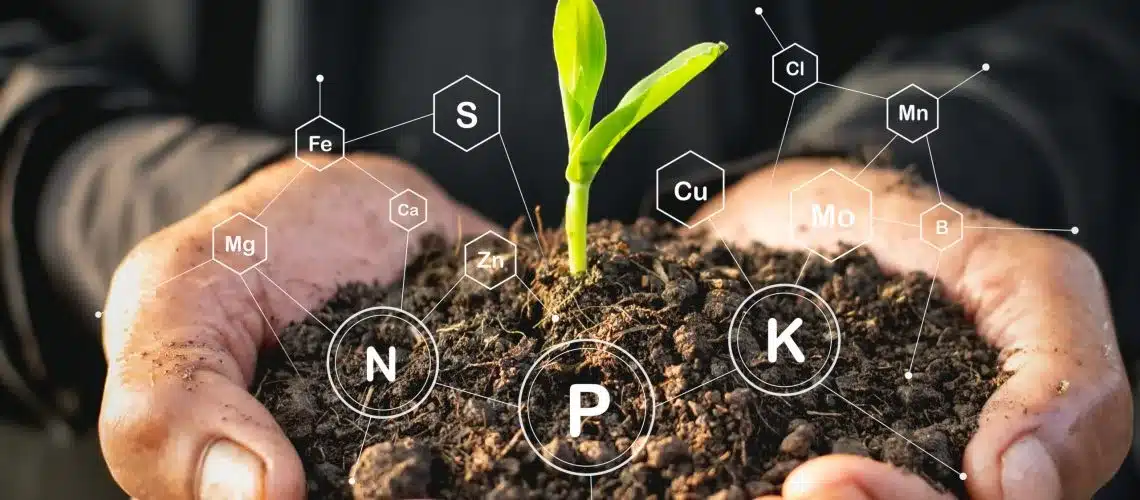High-Brix crops are the cornerstone of sustainable farming. Resistant to disease and unappealing to insects, healthy plants with high Brix levels require fewer inputs and improve profitability. They’re also better for human consumption and health.
What is ‘Brix’?
Brix (symbol °Bx) is essentially a measurement of the sugar content, vitamins, minerals, proteins and other solid content in the sap of a plant, expressed as a percentage. Sugar is the main product of photosynthesis, so the more a plant photosynthesises (an indication of a healthy plant) taking place, the more sugar is contained in its tissues, resulting in a higher Brix reading. If a plant produces enough sugar and distributes it to the right places around its structure, it can greatly contribute to growth, flower formation, and fruit development.
Thus, Brix readings have been found to relate directly to nutrient content in plants and fruits. The higher the Brix level, the higher the nutritional value of the fruit or vegetable. Produce with high Brix tastes better too!
| DID YOU KNOW?Brix is named after its inventor Adolf Brix. |
How to measure Brix
Brix is measured using a Brix refractometer. A refractometer is commonly used to measure sugar levels in the wine and fruit juice industries, but it is also a useful tool for measurements in whole fruits and vegetables.
The process involves extracting the juices of a fruit or plant and using light refraction to determine the density of the sugars and other dissolved solid content, called total dissolved solids (TDS).
The refractometer is a hand-held manual or electronic instrument which measures the amount of light refracted by sap. The more light that is refracted, the more nutrients and flavours are in the crop and the higher the Brix measurement.
The test is relatively simple to conduct: a few drops of sap are squeezed from the crop onto the prism of the refractometer, which gives a reading in Brix. With firmer vegetables or fruit, juice may need to be squeezed out using a garlic press. For even tougher produce, one may need a sap squeezer to extract the juice.
Brix testing tips
- Brix may be tested using sap squeezed out of any part of the plant—leaves, stems, green fruit or roots
- It is vitally important to be consistent when taking the measurements as Brix doesn’t remain constant throughout the day
- Brix can be affected by temperature, sunlight, frost, rainfall or irrigation
- Samples should always be taken from the same part of the plant, especially in larger fruits such as pawpaw, pineapples and melons
- Producers should build up a body of Brix data to help fine-tune the crop management programme
Why test Brix levels?
Measuring the Brix prior to harvest is only one part of the picture. Analysing Brix levels can also be used to measure the health of both the plant and the growing medium, as well as track a crop’s response to changes in the growing regimen. For example, measuring Brix prior to changing the irrigation regime and again after the change has been made can indicate the effect of the adjustments on the health, quality and taste of the produce. If the change isn’t working, the farmer can still correct it before the crop matures.
What level of Brix is considered ‘high’?
Here’s a quick summary of what different Brix levels mean for plant health:
| 0 – 2 Brix | Very low Brix | The plant is essentially unable to ‘look after itself’. Insects will move in quickly to consume these plants and disease will run rampant. |
| 3 – 7 Brix | Mid-level Brix | The plant has a chance of survival. Most agricultural plants fall within this range. They require pesticides and fertilisers in order to thrive. |
| 8 – 11 Brix | Higher Brix | Natural resistance begins. Most sucking insects will not tolerate 8 Brix or higher; chewing insects that eat the roots or leaves directly will start to lose interest once the plant reaches a Brix level of 10 or 11. |
| 12 – 20+ Brix | High Brix | Virtually no insects will attack a plant with a Brix level of 12+. |
What are the benefits of high Brix levels in plants?
#1 More resilient
Nature has been designed to use insects to get rid of poor-quality plants. Since the dawn of industrial farming, however, farmers have been neglecting soil health, growing low Brix crops, and fighting off insects and diseases with synthetic pesticides and chemicals. But when it comes to plants with naturally high Brix, insects and other pests tend to avoid them by default. Good Brix levels can also confer enhanced protection against frost.
#2 Require less inorganic disease and pest prevention
Because plants with high Brix levels are less prone to disease and attract fewer insects than unhealthy plants, they don’t need to be treated with as many pesticides and chemicals. Ideally, they shouldn’t need any chemical interference at all.
#3 Increase profits
Because high Brix plants render insecticides and pesticides obsolete, the reduction of required inputs results in an increase in profitability.
#4 Beneficial to human health and nutrition
High Brix crops have higher carbohydrate levels, and are thus more energy-dense and easier for humans to digest. They also have high mineral density, including higher calcium levels.
And because high Brix plants require fewer chemical inputs, they don’t carry nearly as many potentially chemical residues as how Brix plants do.
Learn more about the link between soil health and human health.
#5 Produce tastes better
Taste is built on the carbohydrate and mineral levels of the produce we eat. Thus, higher Brix = more carbohydrates and minerals = better taste and smell.
#6 Storage attributes
Keeping Brix levels as high as possible means that the final product will last longer on the plant and on the shelf. It allows you to extend the picking time or shelf life by 10 to 14 days, reducing wastage and increasing profit potential.
So, how does one achieve high Brix levels in crops?
For generations, wine producers have known that the best wines are produced from high-Brix grapes grown in particular soils. The answer lies in the health of the soil. Simply put, high Brix levels are the end result of soil health. A high Brix level indicates the presence of an effective soil management programme that results in healthier, hardier plants that are more resistant to insects and disease.
The vitamins in whole foods with high Brix levels are directly related to the minerals that a plant receives from its growing medium. So if your soil is rich in the minerals your plants need to thrive, you’ll be well on your way to producing nutritious, delicious harvests.
How to feed the soil for high Brix outcomes
As we’ve discussed, the foundation of high-Brix agriculture lies in the soil. That’s why it’s recommended to introduce a soil health programme that develops fertile and balanced soil that is rich in beneficial soil microbes.
- Conduct a soil test to identify the status of your soil and the appropriate amendments
- Adopt regenerative farming principles
- Build up organic matter in the soil
- Fill any gaps with appropriate foliar feeding
Many farmers choose to use soil food for enhanced soil health and fertility that provides optimal crop performance. Formulated by Zylem, Sea Brixº™ is a product with the primary objective of maximising photosynthesis, the process that ultimately results in high Brix levels of the plant.
The Sea Brixº™ name is indicative of its source and its effect – products and ingredients originating from the sea (such as fish hydrolysate and kelp) contribute to factors that make soils healthy, which, in turn, results in higher Brix levels in plants.
Find out more about Sea Brixº™ and our soil health solutions.

About the Author: Alex Platt
Alex is Business Development Manager at Zylem. He’s inspired by the potential of regenerative farming and takes a special interest in the technology and products that are moving agriculture in a more sustainable direction.

